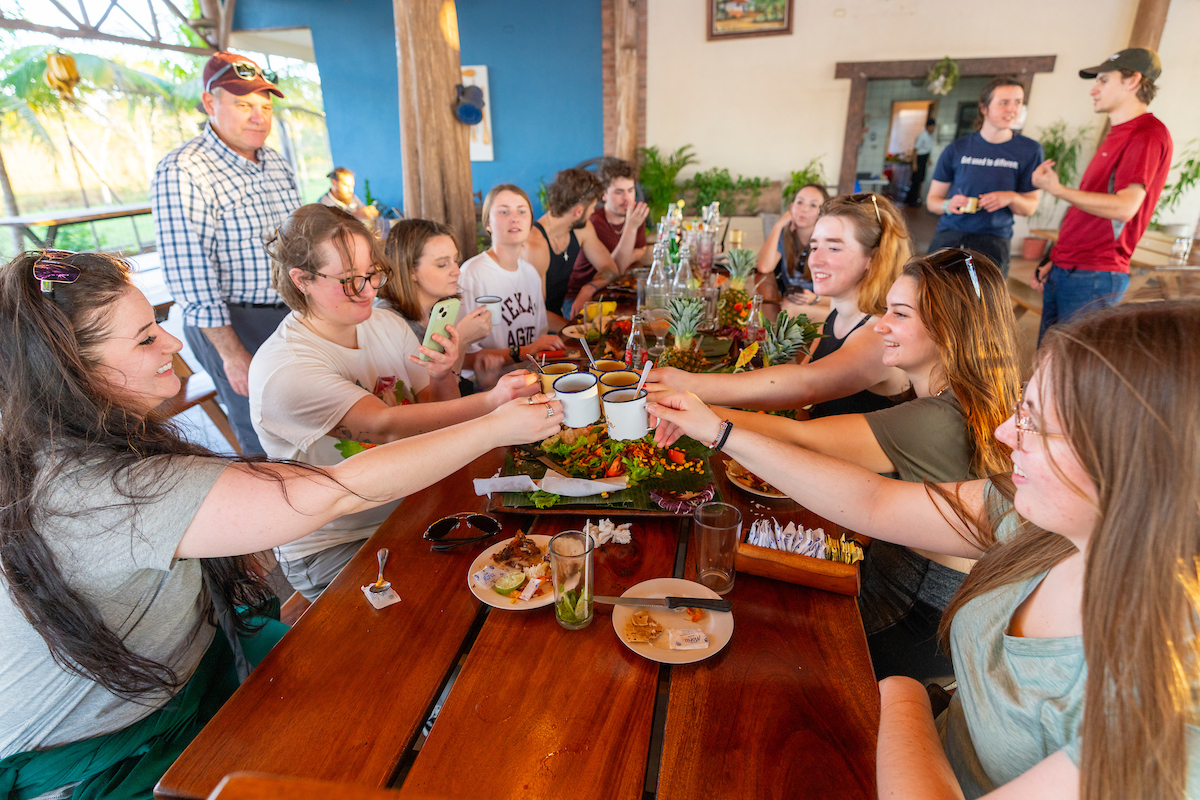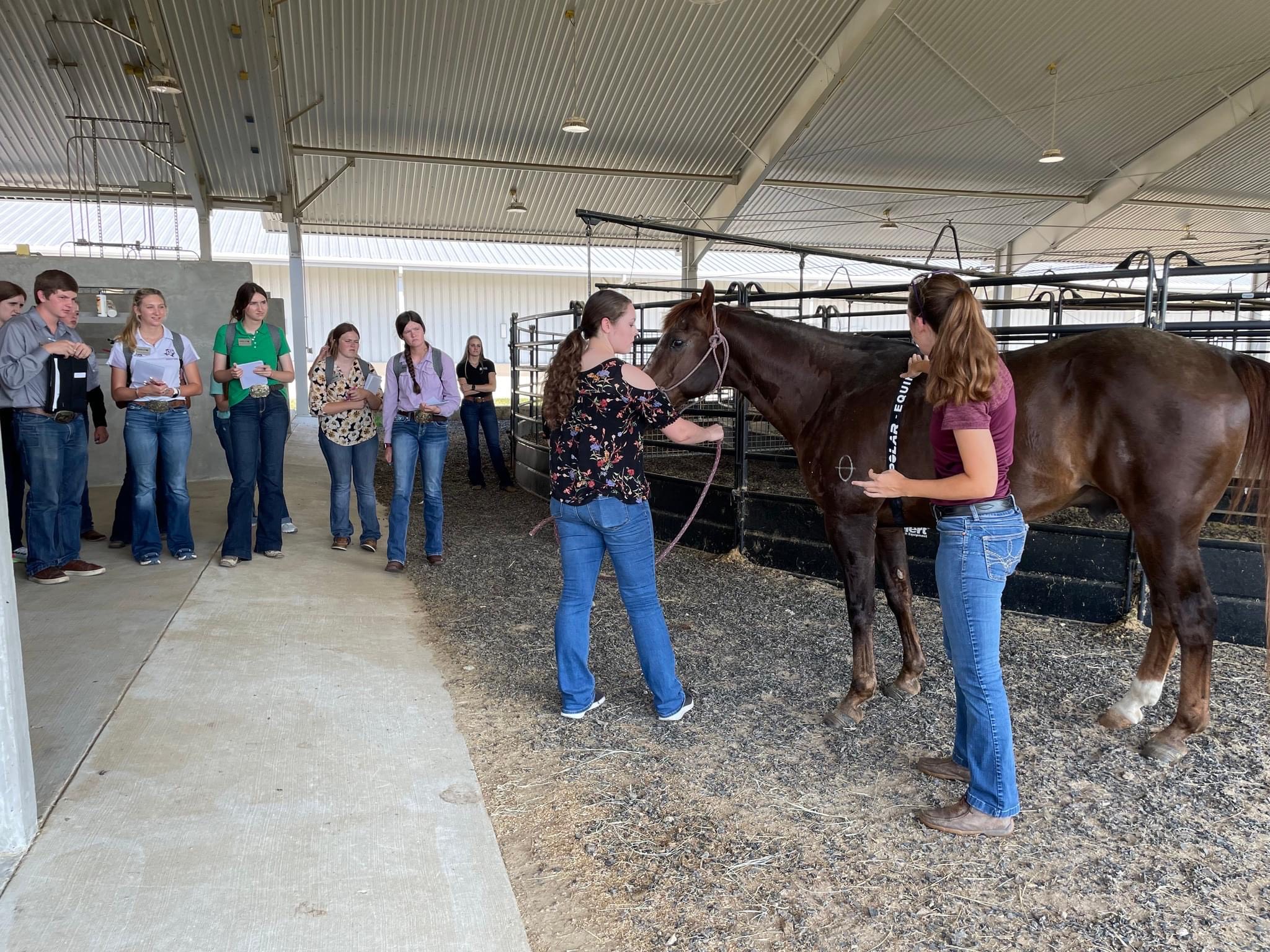Sharing the sensational side of food science
Junior food science major fosters curiosity in the field and serves her community
Originally from the suburbs of New Orleans, Alisha Patterson always enjoyed cooking and baking, but she found her first real taste for food science through the National FFA Organization’s Agriscience Fair.

Could people taste the difference between white and brown eggs? Had the reduced workforce in milk processing plants during the COVID-19 pandemic resulted in decreased bacterial counts in the dairy products? These were the kinds of questions that captivated Patterson and prompted her FFA advisor to suggest she investigate the field of food science.
Along with her father, a Texas native, Patterson visited the Texas A&M College of Agriculture and Life Sciences Department of Food Science and Technology for a meet-and-greet event on Aggieland Saturday during her junior year of high school.
“Everybody seemed really supportive of the students, like they wanted to help build the students to be their best selves and help them further their career,” Patterson said. “That’s what really attracted me to study food science at Texas A&M.”
Stirring up fascination in food science
Since graduating high school and moving to Texas in 2021, Patterson has continued to enjoy asking questions about food science and finding ways to share the interest with others, much like she did in her high school FFA projects.
One of her most memorable moments was during her freshman year, when she volunteered to attend an event at an elementary school with the Food Science Club, presenting projects to spark scientific curiosity among the younger students. Patterson’s project idea involved creating sensory kits tailored to each child’s “mouth behavior” group: chewer, cruncher, smoosher or sucker.
“I did my research and found kids’ snacks that would relate to each of those preferences,” Patterson said. “Then, with help from the Food Science Club, I made a ballot that the kids could easily understand and fill out. It was a great way to get them involved and give them a little taste of what sensory science is about.”
Many of Patterson’s most rewarding experiences in the department stem from similar instances that allow her to apply her knowledge in a hands-on way and bring others into the food science fun. One such case was in the Food Chemistry class she took with Stephen Talcott, Ph.D., where she and the other students were tasked with elevating the quality of a generic product to match that of a top-brand item.
Another favorite class for Patterson is Sensory Evaluation of Foods with Rhonda Miller, Ph.D., where she is learning to organize taste-test panels.
“We recently finished with a tasting panel that asked people if they could tell the difference between two brands,” Patterson said. “My group focused on sweet teas, so we went around campus handing out samples and having volunteers fill out ballots with their guesses. I really enjoy this kind of project because it lets me meet new people and get to know my groupmates a little more.”
Science with a side of service
Patterson also keeps busy with extracurricular activities, many of which relate to her studies and passion for community service. Early on in her education, she participated in Cupcakes for a Cause, a student organization that donates profits from the sales of homemade cupcakes to a local charity. She later joined Women Helping Out Other People, WHOOP, another student organization dedicated to giving back to the community.
“Throughout my high school career, I did a lot of volunteer activities and always enjoyed them,” Patterson said. “I find a lot of gratitude from being able to do that in college as well, to give back and use my time in these helpful ways.”
Patterson is also the secretary of the Food Science Club. Her role involves monitoring attendance at meetings to give out prizes for those with high attendance later in the semester and finding volunteer opportunities for the members.
“We’ll occasionally go to the Brazos Valley Food Bank and help out there, and we participate in The Big Event,” Patterson said. “We also have professionals visit and speak to us about their companies, and the club promotes internship opportunities and showcases different aspects of the food science field we could go into.
“Food science is not a big major. What I enjoy most about the club is that it helps us to build a community,” she said.
A future in sensory science
Looking ahead, Patterson plans to continue her education in the sensory side of food science, aiming to earn a master’s degree before launching into the industry. From there, she hopes to find work as a sensory scientist, organizing taste-test panels and evaluating people’s perception of food products — as she’s done in her previous projects.
To future food science students, she recommends trying everything you can.
“The Food Science Club is a great place to start building a career in the food industry,” Patterson said. “And don’t be afraid to talk to faculty about your goals, because everyone in the department is willing to dedicate time to help you find the best area of food science for you.”





